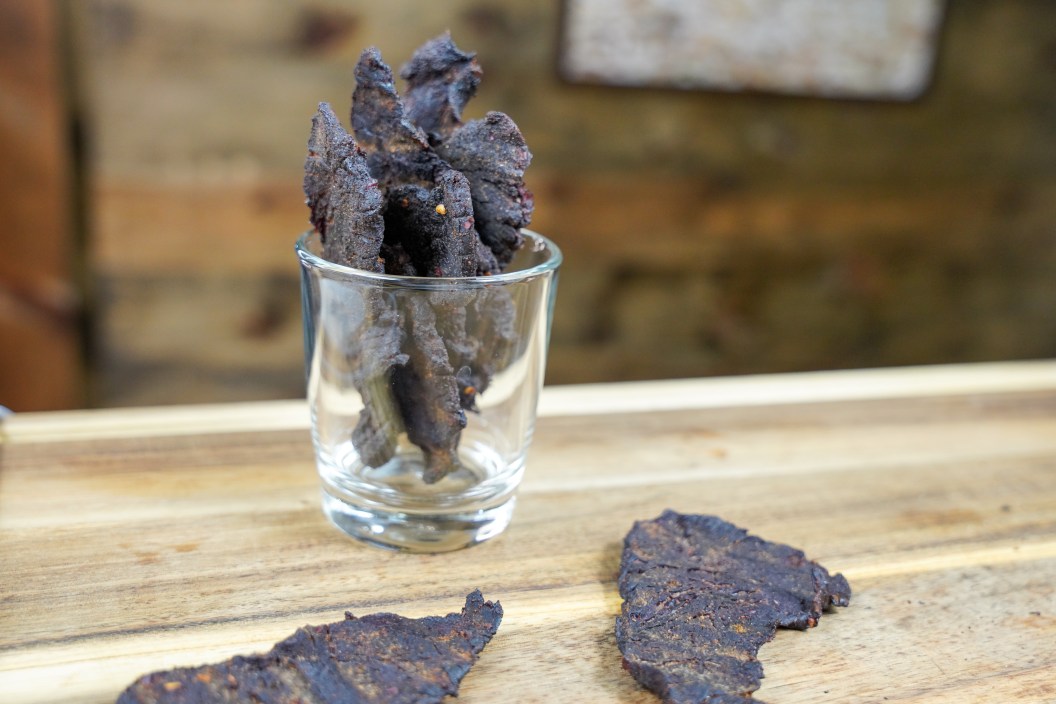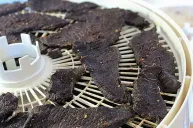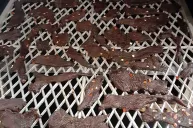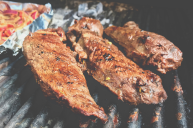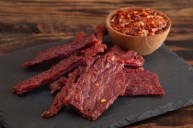Venison is an incredibly versatile meat. The ways to cook deer meat are virtually endless, especially with a fresh bag from your latest deer hunt. The best deer recipes result in crowd-pleasing appetizers, such as honey balsamic venison bites or pizza dip and main dishes, like venison tenderloin and venison backstrap. But one preparation is a guaranteed hit with the whole family: deer jerky.
Making venison jerky might sound daunting, but it's simpler than you think. It requires some time and patience, but if you've mastered the art of patiently waiting for the perfect harvest, you're more than equipped to handle the 14 to 20ish hours it takes to transform venison into delectable deer jerky.
Apart from that, all you need is a reliable dehydration method and the perfect deer jerky recipe. Here's how to make venison jerky, plus a handpicked selection of delicious deer jerky recipes from some of our favorite food creators and hunters.
How to Make Deer Jerky
Making venison jerky—which involves removing the moisture from the meat—can be done in an oven, smoker, or dehydrator. The process begins by choosing your cut. The prime cuts for jerky are top eye and rump roast, though opting for the hind leg gives you more extensive slices and the uniform muscle fiber direction ensures more tender results. The basic how-to::
- Slice the meat against the grain, aiming for a quarter-inch thickness
- Marinate and season the meat to taste, letting it sit for at least 24 hours
- Arrange your meat strips in a dehydrator, smoker, or oven
- Monitor the meat, and once it reaches your desired dryness level, it's ready to eat
How Long to Dehydrate Jerky
Place the venison slices in a dehydrator, setting it for three to six hours. Of course, this timing is a general guideline. Several factors can affect the dehydration duration, including:
- Meat thickness
- Meat marbling/fat content
- Specific venison cut used
- External temperature and humidity
Ultimately, jerky-making is a test of patience. Begin with a three-hour setting, then check the meat. If it isn't dry enough, continue the process in 30-minute increments. Perfectly done jerky should be dry to the touch and slightly flexible, showing minor cracks when bent. If the ends snap easily, it's a sign of over-drying and you should stop dehydrating immediately.
How to Store Jerky
Homemade deer jerky doesn't have the shelf life of its store-bought counterpart, as it lacks the preservatives added to the latter. Luckily, storage is straightforward and simple. Store your jerky in a resealable plastic freezer bag, ensuring all air is removed, and refrigerate, and it'll remain fresh for up to a month. For extended shelf life, consider vacuum-sealing the jerky and freezing it. But given its deliciousness, it may be consumed faster than that!
Our 6 Favorite Deer Jerky Recipes
Venison Jerky Recipe
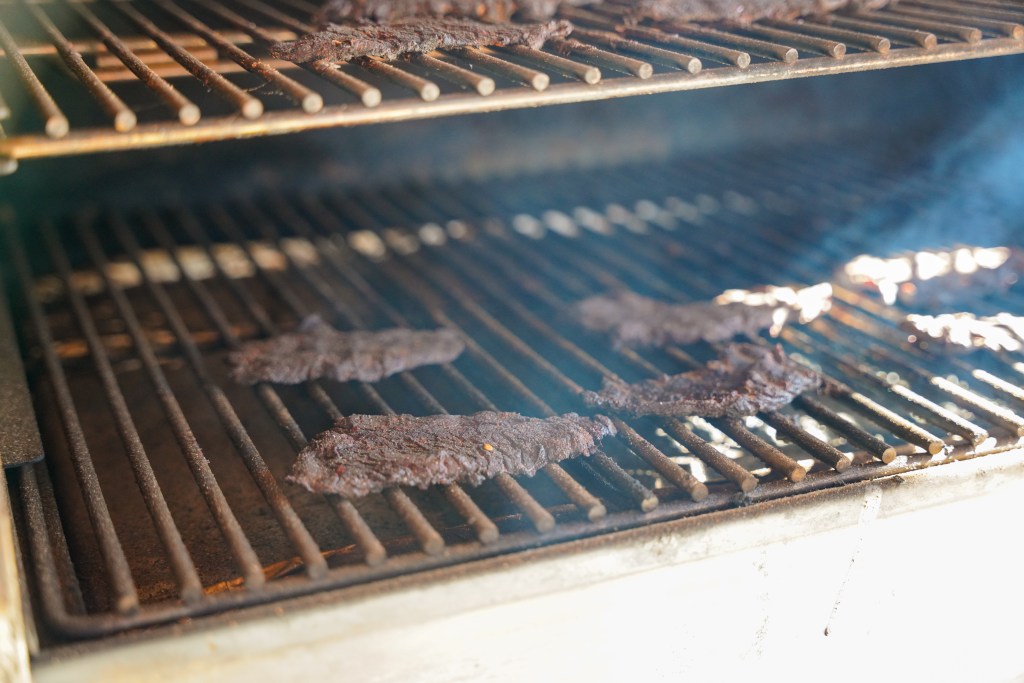
Jennifer Danella for Wide Open Spaces
A simple marinade and a smoker are the keys to this basic-but-tasty venison jerky recipe. The deer meat's flavor is enhanced with an overnight soak in a soy sauce, Worcestershire, honey, and herb-filled bath, followed by about two hours in a low-temperature smoker.
Ground Venison Jerky
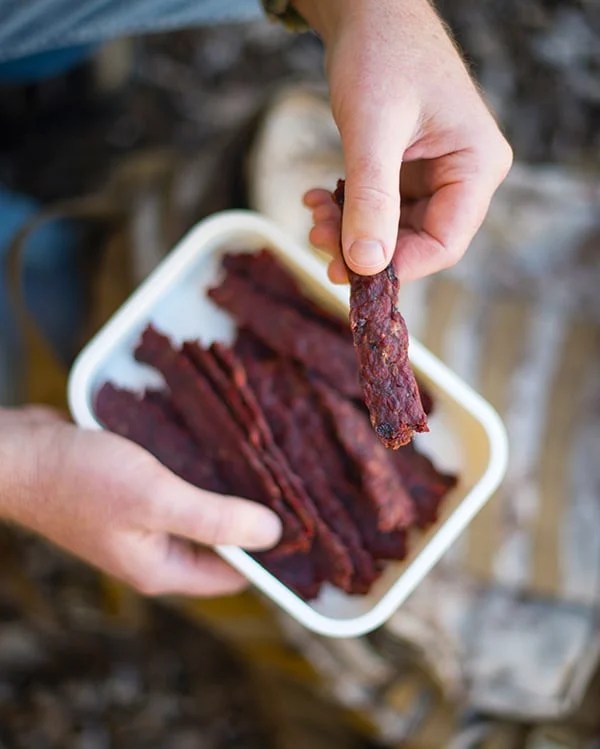
Hunt Gather Cook
While jerky isn't primarily made out of ground meat, it is a popular option among hunters, both as a recipe and as a during-hunt snack. This deer jerky recipe takes even more preparation and a little extra patience. The extra-tasty blend of venison, bacon, and cranberries, and the 24 to 48 hour rest time is more than worth it.
Teriyaki Deer Jerky
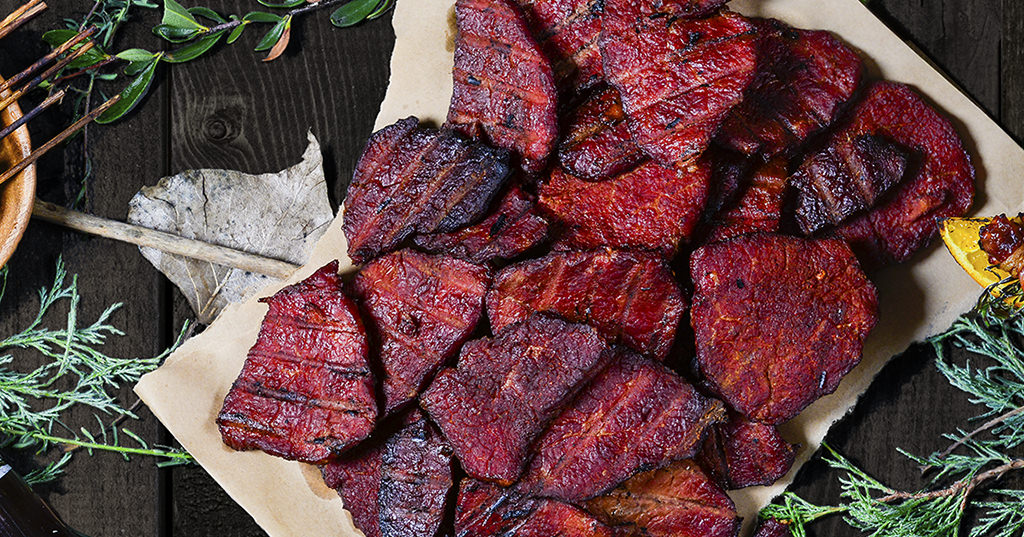
Traeger Kitchen
For those who like a little sweetness and spice to their savory, this teriyaki-marinated jerky from Traeger hits the spot. Spices onion powder, black pepper, and fresh garlic add depth to the mirin and soy sauce mixture. This recipe calls for a smoker, but we think you could achieve similar flavors and texture by adding some liquid smoke and using oven racks or even a food dehydrator if you prefer. (Of course, drying time will vary depending on the method.) Let it rest at room temperature before storing it in the refrigerator.
Frugal Farm Wife's Deer Jerky Marinade
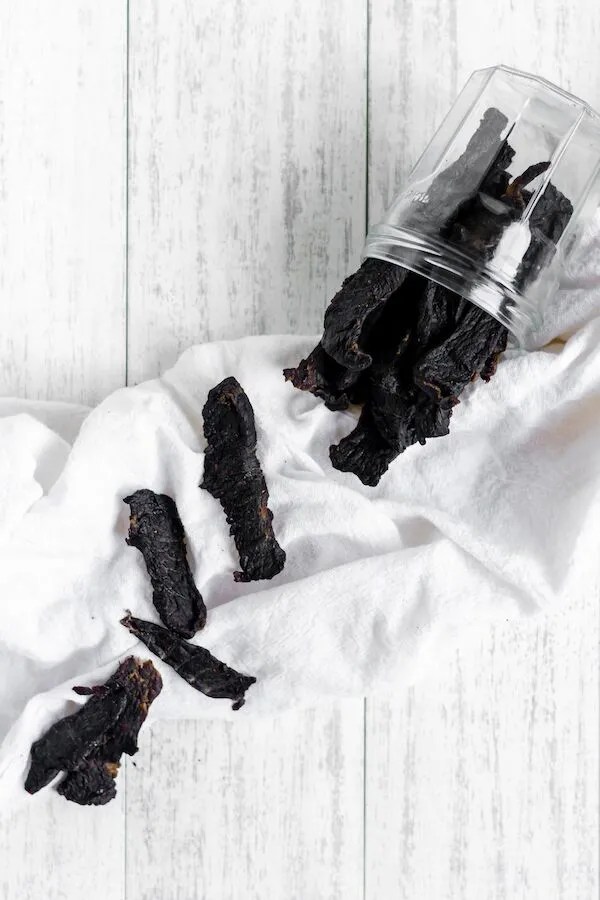
Frugal Farm Wife
Spices, liquid smoke, soy sauce, and Worcestershire sauce? Sounds like a deer jerky marinade you'll want to use on repeat! Blogger Frugal Farm Wife suggests you can use any dehydrating method you like, and this recipe can be used with ground meat as well as sliced meat.
Chipotle Deer Jerky
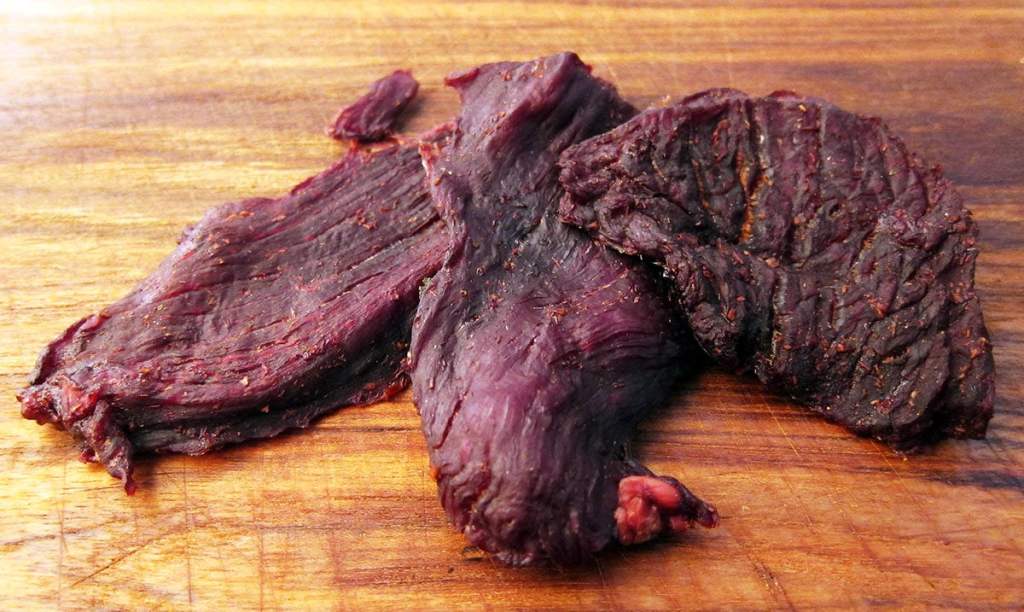
Hunt Gather Cook
No deer jerky recipe list would be complete without a spicy addition. The Chipotle Deer Jerky recipe from Hunt Gather Cook combines adobo chipotle chiles, soy sauce, chopped onion, garlic, salt, and lime. The secret to more flavor and a longer shelf life is to coat every part of the sliced venison with the sauce before letting it sit in the refrigerator for at least 24 hours.
Barbecue Marinated Venison Jerky Strips
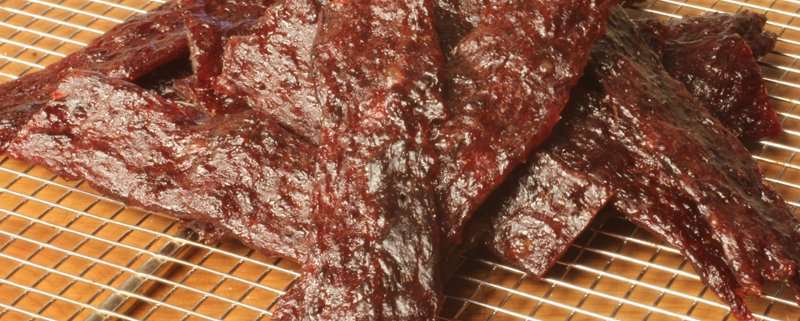
Rifles and Recipes
Barbecued anything is bound to be a hit, and this marinated BBQ jerky, created by Rifles and Recipes, is no exception. With a marinade of brown sugar, ketchup, chili powder, red pepper flakes, soy sauce, dry mustard powder, and hickory salt, you can get that smoky flavor in the oven—as long as you're patient enough for the six-hour bake time.
READ MORE: Is Deer Meat Healthy? What to Know About Venison's Health Benefits
